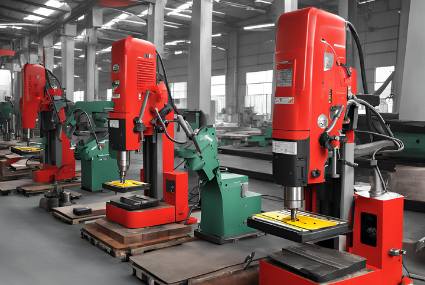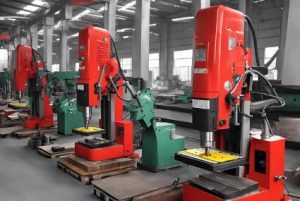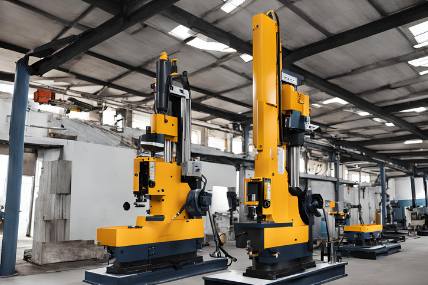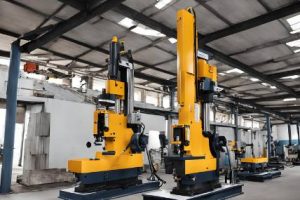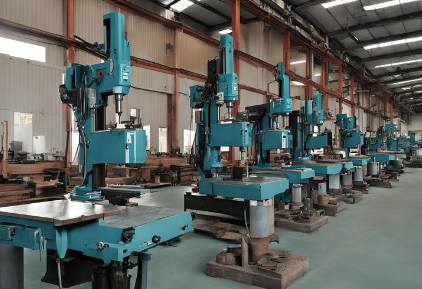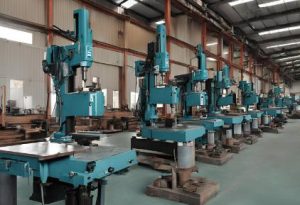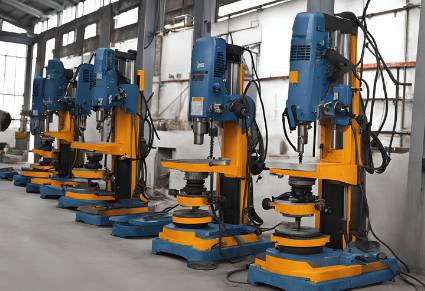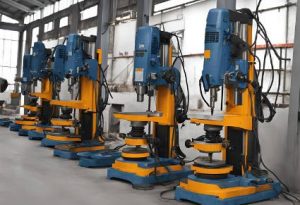Introduction
In the world of power tools, understanding the specifications and markings on your equipment is crucial for optimal use and safety. Drills, being one of the most common power tools, often come with a variety of numbers and symbols that can be perplexing to both novice and experienced users. These numbers can indicate anything from speed settings to torque levels, and deciphering them is essential for selecting the right tool for the job. For instance, the yoca drill machine features a range of numerical indicators that enhance user control and efficiency.
Understanding Drill Speed Numbers
One of the most prominent numbers you’ll find on a drill is related to its speed settings, measured in rotations per minute (RPM). The RPM indicates how fast the drill bit rotates, which can be adjusted depending on the material you’re working with. For example, higher speeds are suitable for drilling through softer materials like wood, while lower speeds are ideal for harder materials like metal or masonry. The ability to adjust RPM is a critical feature that allows for greater precision and prevents damage to both the drill and the workpiece.
Variable Speed Control
Modern drills often come with variable speed control, which is usually represented by numbers on a dial or a trigger mechanism. These numbers might range from 1 to 10, with each increment representing a specific RPM range. Understanding these settings allows users to select the appropriate speed for their task, improving efficiency and extending the lifespan of their drilling bits.
Torque Settings and Their Significance
Another critical number found on drills is the torque setting, often displayed on a rotating collar near the chuck. Torque refers to the twisting force the drill applies, which is essential when driving screws or bolts. Higher torque settings deliver more power, making them suitable for larger screws or tougher materials. Conversely, lower torque prevents overdriving and stripping screws in softer materials.
Clutch Settings
The adjustable clutch on a drill controls torque and prevents overdriving. Numbers on the clutch ring correspond to different torque levels. For instance, setting the clutch to 1 delivers minimal torque, ideal for delicate tasks, while higher numbers provide maximum torque for heavy-duty applications. This feature is especially useful in cordless drills, where battery efficiency is paramount.
Drill Size Indicators
Drills also display numbers indicating the size of the drill chuck, such as 3/8-inch or 1/2-inch. The chuck size determines the maximum diameter of the bit that can be used with the drill. A larger chuck size offers greater versatility, accommodating more substantial bits for bigger holes. Selecting the appropriate chuck size is essential for the compatibility of accessories and overall performance.
Metric vs. Imperial Measurements
Depending on the region and manufacturer, drills may use metric or imperial measurements for chuck sizes. Understanding these measurements ensures correct bit selection and prevents potential equipment damage. For example, a 10mm chuck is roughly equivalent to 3/8-inch, which is a common size for household drills.
Battery Voltage Numbers in Cordless Drills
Cordless drills feature voltage numbers prominently displayed, such as 12V, 18V, or 20V. These numbers indicate the power output of the drill’s battery. Higher voltage drills deliver more power, suitable for heavy-duty tasks, while lower voltage models are lighter and more convenient for general-purpose use. Selecting the right voltage balances power needs with portability and battery life.
Impact on Performance
The voltage not only affects power but also impacts the drill’s overall performance and runtime. Higher voltage batteries tend to be heavier but provide longer operation between charges. Users must consider the trade-off between weight and power when selecting a drill for extended use.
Hammer Drill Impact Numbers
For hammer drills, you might encounter numbers indicating the impact rate, measured in blows per minute (BPM). This specification is crucial for drilling into masonry or concrete, where the hammering action aids penetration. A higher BPM means the drill can handle tougher materials more efficiently.
Selecting the Right Impact Rate
Understanding the required impact rate for your project ensures you choose a drill capable of performing the task effectively. For professional construction work, a higher BPM is necessary, while for occasional home use, a lower impact rate may suffice.
Manufacturers’ Model Numbers
Drills often have model numbers assigned by the manufacturer, which can include a series of letters and numbers. These identifiers can indicate a range of features, including the tool’s generation, specific capabilities, or bundled accessories. Consulting the manufacturer’s specifications helps decode these numbers for informed purchasing decisions.
Decoding Model Numbers
For instance, in the model number “DCD791D2,” “DCD” might stand for “DeWalt Compact Drill,” “791” could indicate the series, and “D2” might refer to the battery type and included accessories. Understanding these conventions allows consumers to compare models accurately.
Safety and Compliance Numbers
Some numbers represent safety certifications or compliance standards, such as CE markings or UL listings. These numbers ensure that the drill meets specific safety requirements and is approved for use in certain regions or industries. Recognizing these markings is essential for professional users who must adhere to regulatory standards.
Understanding Compliance Markings
Compliance numbers are often overlooked but play a crucial role in workplace safety. Using tools that meet the necessary standards protects users from legal liabilities and ensures adherence to occupational safety guidelines.
Maintenance Indicators and Serial Numbers
Drills may also feature serial numbers and maintenance indicators. Serial numbers are unique identifiers for warranty registration and service purposes. Some advanced drills include digital displays showing maintenance codes or battery health readings, aiding in tool management and longevity.
Utilizing Digital Indicators
Embracing drills with digital maintenance indicators can streamline workflow by preemptively addressing issues. Regularly monitoring these numbers helps in scheduling maintenance, reducing downtime, and extending the tool’s lifespan.
The Role of Drill Manuals
To fully understand the numbers on a drill, consulting the user manual is indispensable. Manufacturers provide detailed explanations of all indicators, ensuring users can utilize the tool effectively and safely. Manuals can also reveal hidden features that enhance the functionality of the drill.
Accessing Digital Manuals
With the advancement of technology, many manufacturers offer digital manuals accessible via QR codes or online downloads. This allows for quick reference on job sites and ensures that information is readily available when needed.
Integration with Smart Technology
Some modern drills integrate with smart technology, displaying numbers and settings through connected apps. This innovation allows for customization of settings, tracking usage statistics, and even locating lost tools. Understanding these numbers requires familiarity with the accompanying software.
Benefits of Connected Tools
Connected drills offer a new level of control and data analysis. For businesses, this means better asset management and productivity tracking. For individual users, it enhances the experience by tailoring the tool’s functionality to personal preferences.
Selecting the Right Drill Based on Numbers
Ultimately, the numbers on a drill guide users in selecting the right tool for their specific needs. By understanding speed settings, torque levels, battery voltage, and other numerical indicators, users can make informed decisions that affect performance and efficiency. Tools like the yoca drill machine exemplify how numerical indicators enhance usability.
Conclusion
Deciphering the numbers on a drill is more than a matter of curiosity; it’s a critical aspect of tool selection and usage. These numbers provide valuable information about the drill’s capabilities, limitations, and optimal operating conditions. By investing time to understand these indicators, users can enhance safety, improve workmanship, and extend the lifespan of their equipment. Embracing knowledge about tools like the yoca drill machine empowers both professionals and hobbyists to achieve better results in their projects.
